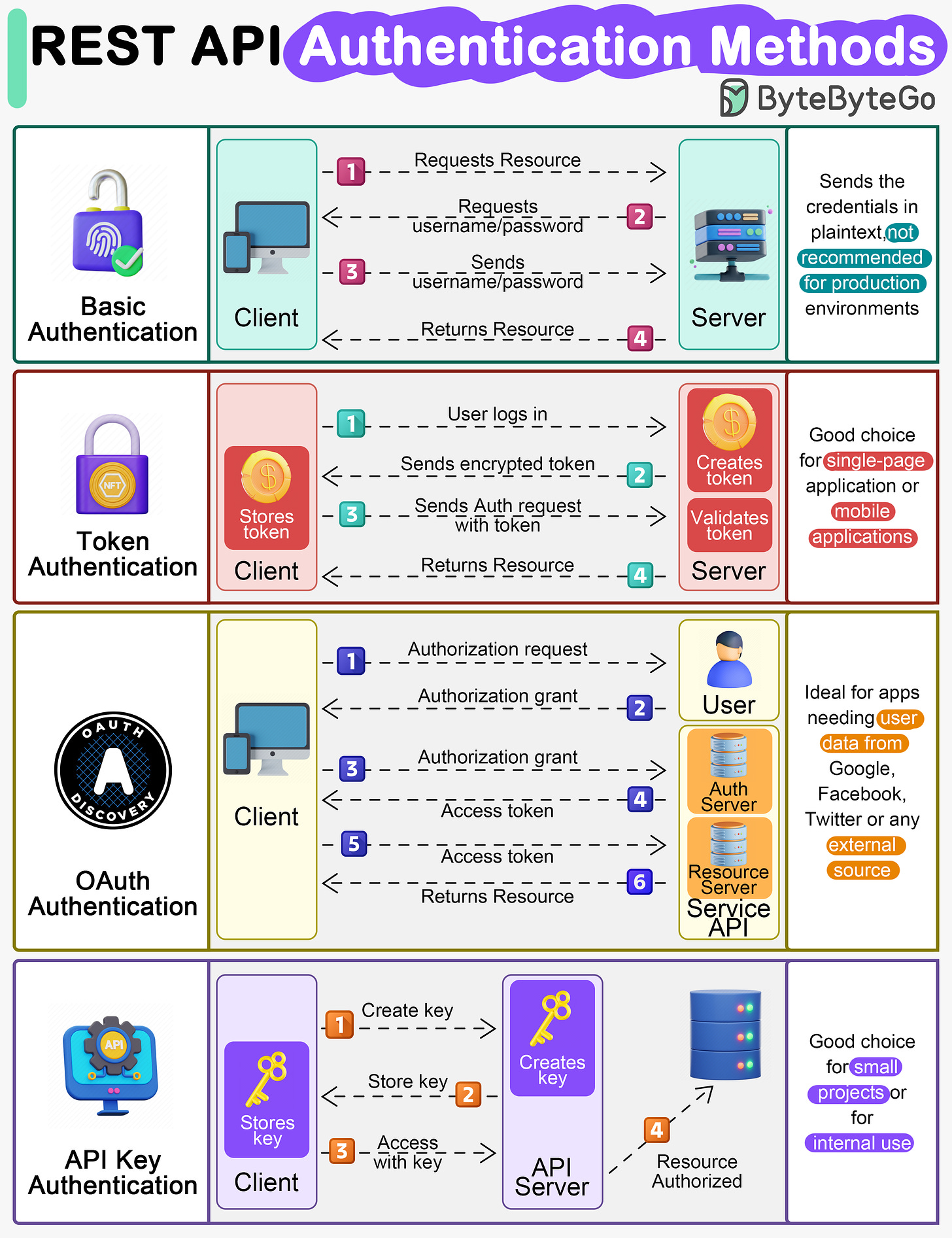REST API Authentication Methods
Authentication in REST APIs acts as the crucial gateway, ensuring that solely authorized users or applications gain access to the API's resources.
[

Some popular authentication methods for REST APIs include:
- Basic Authentication: Involves sending a username and password with each request, but can be less secure without encryption. When to use: Suitable for simple applications where security and encryption aren’t the primary concern or when used over secured connections.
- Token Authentication: Uses generated tokens, like JSON Web Tokens (JWT), exchanged between client and server, offering enhanced security without sending login credentials with each request. When to use: Ideal for more secure and scalable systems, especially when avoiding sending login credentials with each request is a priority.
- OAuth Authentication: Enables third-party limited access to user resources without revealing credentials by issuing access tokens after user authentication. When to use: Ideal for scenarios requiring controlled access to user resources by third-party applications or services.
- API Key Authentication: Assigns unique keys to users or applications, sent in headers or parameters; while simple, it might lack the security features of token-based or OAuth methods. When to use: Convenient for straightforward access control in less sensitive environments or for granting access to certain functionalities without the need for user-specific permissions.
Over to you: Which REST API authentication method do you find most effective in ensuring both security and usability for your applications?